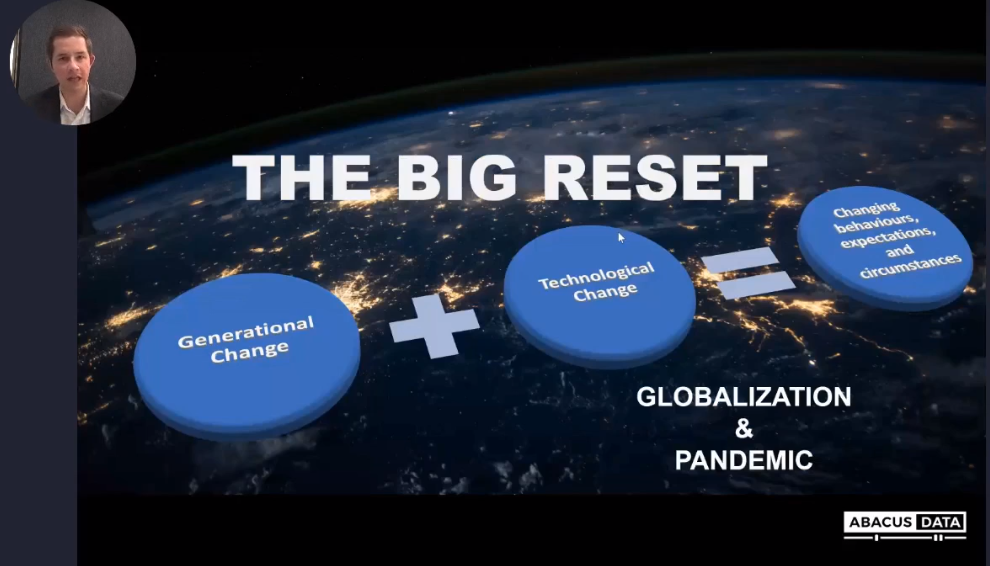How trucking can better attract Millennials, Gen-Zers
EDMONTON, Alta. – If the trucking industry hopes to attract more youth, it needs to better communicate the employment opportunities that exist and help new entrants manage the financial burden of training.
That was the message from three young ladies participating on a Youth Entering the Workforce panel discussion at the Western Women With Drive virtual event hosted Oct. 29 by Trucking HR Canada and the Alberta Motor Transport Association. Panelists included Chantelle Meloche, a dispatcher with Edmonton, Alta.-based Lipizzan Transport; Nanda Dhaliwal, a student at Athabasca University who also works at CP Rail’s operations center; and 16-year-old high school student Shaelynn Millin.
The youngest of the three, Millin, said she wants to join a company that promotes a diverse workplace.
“Diversity and inclusion are what would help me feel safer in the workplace and I would love to know I’m in a place where I’m comfortable and would be recognized for my achievements,” she said. “Money is great, but it’s the environment that would keep me there.”

Meloche has held numerous transportation jobs, including truck driver, shunt driver, and dispatcher. Her entry into the transportation world was as a laborer and she recalls the skepticism that she faced over her ability to do the job as a woman. When she was introduced to the job, the person responsible for hiring warned her many men couldn’t handle the physical requirements, and questioned whether she’d be able to.
“The only reason I got called was because the male applicant didn’t show up for his interview,” she recalled. “It was because he had no other choice. It just pushed me to show I could do it. I worked so hard – 16-, 18-hour days – and would only complain to myself when I got home.”
Her advice to young women in the workplace is to ask as many questions as possible, to help gain a better understanding of each aspect of transportation and logistics.
“It helped a lot for me to have experienced drivers to mentor me through,” she said.
Dhaliwal was initially planning to pursue a career in healthcare, before discovering opportunities that existed in transportation. She said high school students are rarely told of such opportunities.
“It’s not something they bring up in high school,” she said. She took a job at CMA GGM, a container shipping company, and quickly learned how many different roles are involved in transportation and logistics. “I ended up liking it,” she said.
Dhaliwal began taking transportation-related courses to expand her knowledge.
“You talk about trucking, and there are so many other people who work on that one load with the trucks,” she said. “It’s something I found really interesting and what keeps me in this industry, knowing there are so many options.”
In addition to better educating students about career opportunities in trucking, the industry must also help those interested in pursuing a trucking career to cover the cost of training.
“If you’re 18, you’re not thinking about putting out $8,500 for training. Nobody wants to do that. It’s a huge thing employers should do to recruit young people,” suggested Dhaliwal.
Meloche agreed, noting she was only able to obtain a Class 1 licence because her employer covered the cost.
“Tuition subsidies are huge,” said Dhaliwal. “For me, they’re one of the biggest things that pull me into a company or have me stick around, them investing in me and having development courses. I think it’s huge that they invest in you and take some of these costs off you. It’s one of the biggest things I look for in a company.”
She also said workplace flexibility, such as working from home and encouraging a work-life balance, are also important attributes of an employer, as are employee recognition and reward programs.

Getting your SHIFT together
David Coletto, a founding partner and CEO of Abacus Data, brought some insights to the table on how to tap into the Millennial and Gen-Z workforces. Defined as those born from 1980-2000 and 2000-on, respectively, those two generations now represent half of Canada’s population, Coletto pointed out, and will soon dominate the working age population.
“We’re not kids anymore,” he said, noting all this year the first Millennials have been entering their 40s.
But trucking has been ineffective at attracting these younger employees. The average age of the Canadian truck driver is 55, and only 15% of trucking’s workforce is under the age of 30.
“We are seeing an aging driving population without much renewal,” Coletto pointed out.
While Coletto said these two youngest generations have more in common with those who came before them, than differences, he also acknowledged they were raised differently. They grew up in a time parents and society gave them more attention – the so-called self-esteem movement – and they also grew up using technology. This means their expectations in the workplace are different. They want to feel a sense of purpose, Coletto said, and he outlined five factors (SHIFT) that are at their core.
S – Self-educators, who due to social media are more image-driven and self-conscious than previous generations about their personal brands.
H – Hopeful, but increasingly anxious about their economic and social futures, due to concerns such as climate change, and struggles to afford housing in many markets.
I – Impact and passion, a need to spend their time on something that matters and helping people through their work.
F – Feedback from everybody, and a need for it to be personalized and customized, so they know they are contributing to their company’s success. “We got lots of trophies over our life,” Coletto added.
T – Transparency and control, with transparency being a huge expectation in the era of social media, and access to leaders an expectation in a time when even the U.S. president communicates directly to the public via social media.
Have your say
This is a moderated forum. Comments will no longer be published unless they are accompanied by a first and last name and a verifiable email address. (Today's Trucking will not publish or share the email address.) Profane language and content deemed to be libelous, racist, or threatening in nature will not be published under any circumstances.
looking to hire new drivers ins, is also a huge factor companies wont hire adriver unless they are at least 25 alot of the drivers in my era started driving right out of high school by the time individuals are 25 they have usally chosen a carrer path so no wonder you don’t have a larger percentage under 30 i understand small carriers can’t afford there own ins program like larger carriers do but maybe they could band together to as a co-op ins.so they could recruit younger drivers ???
-
The Ont gov needs to help a insurance group and premium assistance for new truck, bus , wheel chair vans and taxis for all fleets for up to 10 vehicles and driver with less than 2 years experience.
Great article! Sucha blessing to be involved in such a great event.
Just wanted to point out that it was me that got my class1 paid for by my boss.
Three young ladies? Are we in the 1950s? Start by calling them ‘women,’ just as you call males’ men.’
Insurance wont even look at a driver to cross into the U.S. unless they have AT LEAST 2 years experience, and/or 25 years of age with almost all trucking companies up here due to recent big $ law suits with some newer drivers down there involved with driver training; this problem is far beyond attracting young drivers to this industry if they cannot be insured to run the lanes where the jobs are…MELT means nothing in Ontario with insurance companies; at least from my experience within this business, either that or your premiums are super high or in a captive/self insured, or have a large amount of resources, and run a heck of a safety/training program; We cant make every new driver a “local driver” or “Canada only” for 2 years at companies where alot of this problem attracting young talent exists…
Trucking needs to be marketed at the high school age demographics to avoid the trap of getting only drivers that are “doing this as a second career in life”; Insurance and MTO need to get together and weed out these unsafe carriers that continue to operate and reopen as New Co’s overnight; and We need to be able to put these drivers to work in safe environments to learn the job responsibly…
OTA…TTC…CTA…come on lets get some new thinking in this industry…
This is a great business that I have grown up around for many years in various roles, and honestly all I hear is chatter and nothing to actually help change this whole labour gap; its not a matter of a just any driver shortage… it is a “quality/qualified” driver shortage…has been for years…MELT is smoke and mirrors program from what I have seen to show the public a form of action, not a actual mandatory entry level training to driver a truck….
The younger generation a need to learn to put their phones down if they are going to drive. They need discipline, caring, kindness, respect, and responsibility. After that you need patience. If you don’t have those qualities, you can’t be a driver. In the United States, more people have Class A licenses then there were jobs. Now the situation has changed. It is good to have guidence counselors offer such careers with the understanding that you can start small, but you need to be 23 yrs. old to drive tractor trailer. We can’t afford young minds in trucking because they cause too many traffic accidents/deaths at a young age.
It costs over $10,000 by time you look at the cost of school and what the better companies spend another 6 weeks with a good driver trainer. When I used to train truck drivers years ago I could make more miles running solo than when training for the first 4 weeks. I always say in the passenger seat when training. In Ontario smaller trucking companies ( under 10 company trucks ) plus limited number of owners ops. are finding it a very hard insurance market. As long as certain members of certain east coast trucking companies can bring in very cheap foreign truck drivers wages are too low to keep experienced truck drivers. Other jobs in construction, firemen, some factories are offering $30.00 plus per hour. In Huron Country local snow plow operaters start at $28.00 per hour and they had 10 people apply for each position. We need to look at minimum wages for Transit vehicles heavy truck drivers and school buses carrying more than 15 passengers. P S we also need to look at the mechanic training program. We as a country need to allow each trucking company or construction company or farm to bring in 2 seasonal workers for 8 months from April to Dec providing they supply them with a private room and pay at least 1,6 times minimum wage.